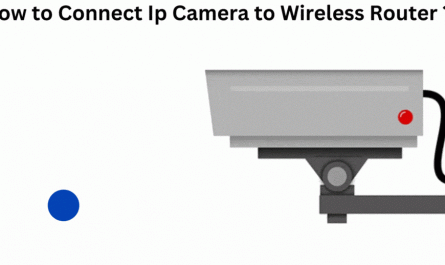If your home or office Wi-Fi isn’t working as well as it should, there are a few things you can do to try and fix the issue. But before you start troubleshooting, it’s important to first determine if the problem is with your router or some other component of your network.
If your wireless router is bad, it might be causing problems with your internet connection. Here are some signs that your router might be to blame:
1. You frequently have to reset your router or restart it.
2. Your internet connection is slow or unreliable.
3. You see error messages when trying to connect to the internet or use certain apps.
4. Devices that are connected to your router keep getting disconnected.
How to Tell If Router Or Internet is Bad
Are you having trouble with your internet connection? There are a few things you can do to troubleshoot the issue. One of the first things you should check is your router.
Here are a few signs that your router may be the problem:
-The internet is slow or intermittent
-You can connect to some websites but not others
-Your devices are losing their connection frequently
If you suspect that your router is the problem, there are a few things you can try:
-Restarting your router: This can fix many problems and is often the first step in troubleshooting.
Simply unplug your router for 30 seconds and then plug it back in. Wait a minute or two for it to boot up and then try accessing the internet again.
-Checking for firmware updates: Firmware updates can fix many common problems.
Check your router manufacturer’s website to see if there are any updates available.
-Resetting your router: If restarting doesn’t work, you may need to reset your router to its factory default settings. This will erase all of your customizations, so be sure to back up any important information before proceeding.
To reset most routers, simply press and hold the reset button for 30 seconds while the power is on.

Credit: www.nytimes.com
What Happens When a Wireless Router Goes Bad?
When a wireless router goes bad, there are a few things that can happen. The most common thing is that the router will just stop working. This can be caused by a number of things, including a power surge, overuse, or simply age.
If this happens, you’ll need to replace the router. Another thing that can happen is that the router may start behaving erratically. This can include dropping connections, slowing down speeds, or even causing interference with other devices in your home.
If this happens, it’s often due to hardware damage and you’ll likely need to get a new router. In rare cases, a wireless router can actually cause problems with your internet connection. If you notice that your connection is suddenly slower or more unreliable than usual, it could be due to your router.
In this case, you should contact your ISP to see if they can help troubleshoot the issue.
How Long Do Routers Usually Last?
Most routers have a lifespan of about four to five years. However, this can vary depending on the type of router, how often it is used, and the environment it is kept in. For example, routers that are constantly exposed to dust or other harsh conditions may not last as long as those that are kept in cleaner environments.
Additionally, routers that are used more frequently may also have a shorter lifespan than those that are used less often. Ultimately, the best way to determine how long your router will last is to consult the manufacturer’s documentation or contact customer support.
How Do I Know If I Need a New Wireless Router?
If your router is more than a few years old, you might want to think about upgrading it. Newer routers offer better performance and features than older ones. Here are some things to keep in mind when deciding whether to upgrade your router:
-Do you have a lot of devices that connect to the internet? If so, you might need a router with more bandwidth to handle all the traffic. -Do you use demanding applications like online gaming or video streaming?
Again, you might need more bandwidth and/or special features to get the best performance. -Do you have a large home or office? You might need a router with a stronger range so that all your devices can connect wirelessly.
-Is your current router starting to act flaky? If it’s randomly disconnecting or having other issues, it might be time for an upgrade.
How Can I Test My Wireless Router?
If you’re having trouble with your wireless router, there are a few things you can do to test it and see if it’s the source of the problem.
First, try restarting the router. This may seem like an obvious step, but sometimes all it takes to fix a problem is a fresh start.
If that doesn’t work, try resetting the router to its factory settings. This will erase any custom configuration you’ve made, so be sure to back up your settings before doing this.
If neither of those fixes the problem, the next step is to check for interference from other devices.
Wireless routers can be interfered with by things like cordless phones, microwaves, and even baby monitors. If you have any of these devices near your router, try moving them further away or turning them off while you’re troubleshooting your router issue.
Finally, if you’re still having problems, it’s time to contact your ISP or the manufacturer of your router for help.
They may be able to provide additional troubleshooting steps or even replace your router if it’s defective.
How to Troubleshoot Home WiFi and Router Issues
Conclusion
If your router is more than a few years old, it might be time for an upgrade. Newer routers offer better speeds and features than older models. But how can you tell if your router is bad?
There are a few signs that your router might be going bad:
1. Slow speeds: If you’re getting slow speeds, even when there’s no one else using the internet, it could be a sign that your router is going bad.
2. Frequent disconnects: If your router keeps disconnecting from the internet, or from devices on your network, it could be a sign of trouble.
3. Overheating: Routers can overheat, especially if they’re in a hot spot like next to a window or in an enclosed space. If your router feels hot to the touch, it’s probably overheating and needs to be moved to a cooler location.
4. Dead spots: If you have dead spots in your home where the WiFi signal doesn’t reach, it could be due to a weak signal from your router.
Try moving the router to a central location in your home to see if that helps improve the signal strength.





